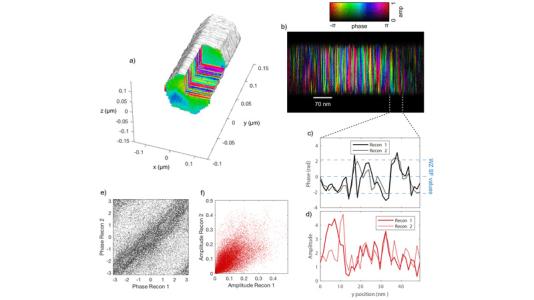
Scientific Achievement
In a single III-V nanowire, the 3D distribution of both strain and stacking defects was measured using coherent X-rays, revealing structural heterogeneity from nano- to micro-meter scales.
Significance and Impact
Structural features that determine the performance of advanced optoelectronic nanodevices can be imaged by a new coherent X-ray Bragg ptychography method suitable for studies in operando.
Research Details
- At the NSLS-II 3-ID beamline, high-resolution nanodiffraction measurements were made of a single InGaAs nanowire at two different Bragg peaks with different structural sensitivity.
- A new multi-angle Bragg projection ptychography method was used to make 3D images of structure down to a scale of 3 nm, with a robust algorithm insensitive to scan registration.
Work was performed at Argonne and Brookhaven national laboratories.
Argonne National Laboratory seeks solutions to pressing national problems in science and technology. The nation’s first national laboratory, Argonne conducts leading-edge basic and applied scientific research in virtually every scientific discipline. Argonne researchers work closely with researchers from hundreds of companies, universities, and federal, state and municipal agencies to help them solve their specific problems, advance America’s scientific leadership and prepare the nation for a better future. With employees from more than 60 nations, Argonne is managed by UChicago Argonne, LLC for the U.S. Department of Energy’s Office of Science.
The U.S. Department of Energy’s Office of Science is the single largest supporter of basic research in the physical sciences in the United States and is working to address some of the most pressing challenges of our time. For more information, visit https://energy.gov/science.